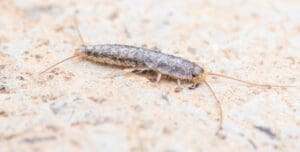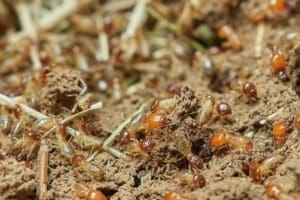

Harnessing the Power of Plants: 9 Plants That Repel Mosquitoes
July 5, 2023
Mosquitoes have a way of making relaxing outdoor activities not so relaxing- for instance, gardening. But what if you could use gardening against the fun-ruining mosquitoes? Well as it turns out, you can! Here are 9 plants and flowers with which you can fortify your garden to keep mosquitoes away.
 What It Looks Like:
Not to be confused with the citronella plant, which is a member of the geranium family, citronella grass is related to lemongrass. It is an ornamental grass that has no blooming cycle, which means it does not grow flowers. It grows in clumps and has very tall, light green blades. Citronella grass looks very much like lemongrass, however lemongrass blades are completely green whereas citronella grass blades have a purplish-pink or red-tinted stem base.
How It Works:
Citronella grass produces citronella oil, which is a well-known mosquito repellant. Mosquitoes hate the smell of citronella, but that is not the only thing that makes it so effective. The scent of citronella masks other scents that attract mosquitoes, like floral perfumes and the oils that humans secrete, confusing mosquitoes into thinking there are no meal sources nearby.
Gardening Tips:
Citronella grass is a perennial plant, however many gardeners in northern climates plant it annually. It thrives best when planted in loamy soil in a spot that receives filtered sunlight. It can dry out or wilt if it gets too much sun. This grass needs a good amount of water, so if you choose to plant it in a container be sure to water it daily.
What It Looks Like:
Not to be confused with the citronella plant, which is a member of the geranium family, citronella grass is related to lemongrass. It is an ornamental grass that has no blooming cycle, which means it does not grow flowers. It grows in clumps and has very tall, light green blades. Citronella grass looks very much like lemongrass, however lemongrass blades are completely green whereas citronella grass blades have a purplish-pink or red-tinted stem base.
How It Works:
Citronella grass produces citronella oil, which is a well-known mosquito repellant. Mosquitoes hate the smell of citronella, but that is not the only thing that makes it so effective. The scent of citronella masks other scents that attract mosquitoes, like floral perfumes and the oils that humans secrete, confusing mosquitoes into thinking there are no meal sources nearby.
Gardening Tips:
Citronella grass is a perennial plant, however many gardeners in northern climates plant it annually. It thrives best when planted in loamy soil in a spot that receives filtered sunlight. It can dry out or wilt if it gets too much sun. This grass needs a good amount of water, so if you choose to plant it in a container be sure to water it daily.
 What It Looks Like:
Lavender grows in shrubs that are roughly 1 to 3 feet tall and wide. The plant has green stems with silvery-green leaves all the way up the stem. The delicate flowers sprouting from the top few inches of each stem are typically bluish-purple in color, but some varieties are white or pink.
How It Works:
Though popular among humans, the smell of lavender is detestable to mosquitoes. Lavender contains chemical compounds like linalool and camphor. These chemicals overload mosquitoes’ olfactory organs the same way DEET does, which is why lavender oil is considered one of the more effective natural mosquito repellants. In fact, researchers found that lavender oil is 93% effective against mosquitoes when used indoors, and roughly 53% effective when used outdoors.
Gardening Tips:
Lavender should be planted in low- or moderately-fertile soil that is neutral to slightly alkaline. This drought-resistant plant thrives in full sun and it requires sufficient drainage. It is considered a perennial plant, though it may need to be planted annually if it does not receive proper drainage. Lavender only needs to be watered once a week until the plants are established, then sparingly every two weeks. Planting the lavandin variety of lavender can be more effective against mosquitoes as it contains a higher concentration of camphor.
What It Looks Like:
Lavender grows in shrubs that are roughly 1 to 3 feet tall and wide. The plant has green stems with silvery-green leaves all the way up the stem. The delicate flowers sprouting from the top few inches of each stem are typically bluish-purple in color, but some varieties are white or pink.
How It Works:
Though popular among humans, the smell of lavender is detestable to mosquitoes. Lavender contains chemical compounds like linalool and camphor. These chemicals overload mosquitoes’ olfactory organs the same way DEET does, which is why lavender oil is considered one of the more effective natural mosquito repellants. In fact, researchers found that lavender oil is 93% effective against mosquitoes when used indoors, and roughly 53% effective when used outdoors.
Gardening Tips:
Lavender should be planted in low- or moderately-fertile soil that is neutral to slightly alkaline. This drought-resistant plant thrives in full sun and it requires sufficient drainage. It is considered a perennial plant, though it may need to be planted annually if it does not receive proper drainage. Lavender only needs to be watered once a week until the plants are established, then sparingly every two weeks. Planting the lavandin variety of lavender can be more effective against mosquitoes as it contains a higher concentration of camphor.
 What It Looks Like:
There are many types of marigolds, all of which vary in appearance. Most, however, grow in shrubs with pom-pom- or daisy-like flowers that are yellow, orange, gold, red, or mahogany in color.
How It Works:
Marigolds contain a chemical called thiophenes as well as a chemical called pyrethrum, which is used in many insect repellants. Mosquitoes hate the smell of both of these chemicals, which are off-gassed by marigolds during their natural biological process.
Gardening Tips:
Marigolds are annual plants that thrive best in moderately fertile soil, though they are able to grow in almost any soil. They like direct sunlight and they require adequate drainage. Allow the soil to dry completely between waterings.
What It Looks Like:
There are many types of marigolds, all of which vary in appearance. Most, however, grow in shrubs with pom-pom- or daisy-like flowers that are yellow, orange, gold, red, or mahogany in color.
How It Works:
Marigolds contain a chemical called thiophenes as well as a chemical called pyrethrum, which is used in many insect repellants. Mosquitoes hate the smell of both of these chemicals, which are off-gassed by marigolds during their natural biological process.
Gardening Tips:
Marigolds are annual plants that thrive best in moderately fertile soil, though they are able to grow in almost any soil. They like direct sunlight and they require adequate drainage. Allow the soil to dry completely between waterings.
 What It Looks Like:
Rosemary grows in small clusters that are grayish-green in color. It has small, thick, needle-like leaves that are powdery white and hairy on bottom and dark green on top. Rosemary sometimes grows small flowers that are blue, white, or pink.
How It Works:
Rosemary has a strong scent that masks other scents that mosquitoes find attractive. This is due to the oil it produces called eucalyptol, which is a natural bug repellant. A great way to get rosemary’s full mosquito-repelling effect is by burning it or throwing a few sprigs on the grill.
Gardening Tips:
Rosemary is a perennial evergreen herb that should be planted in soil that is not too acidic. It thrives in sunny but sheltered areas. Rosemary is drought-resistant and requires sufficient drainage. It should be watered every 1 ½ to 2 weeks if it is planted in the ground and once a week if it is in a container. Let the soil dry slightly between waterings.
What It Looks Like:
Rosemary grows in small clusters that are grayish-green in color. It has small, thick, needle-like leaves that are powdery white and hairy on bottom and dark green on top. Rosemary sometimes grows small flowers that are blue, white, or pink.
How It Works:
Rosemary has a strong scent that masks other scents that mosquitoes find attractive. This is due to the oil it produces called eucalyptol, which is a natural bug repellant. A great way to get rosemary’s full mosquito-repelling effect is by burning it or throwing a few sprigs on the grill.
Gardening Tips:
Rosemary is a perennial evergreen herb that should be planted in soil that is not too acidic. It thrives in sunny but sheltered areas. Rosemary is drought-resistant and requires sufficient drainage. It should be watered every 1 ½ to 2 weeks if it is planted in the ground and once a week if it is in a container. Let the soil dry slightly between waterings.
 What It Looks Like:
Basil has square stems and shiny, bright green leaves that are oval in shape and cup slightly. Basil sometimes sprouts small clusters of flowers that are typically white or magenta in color.
How It Works:
Basil has a very potent scent and produces four mosquito-repelling compounds: estragole, nerolidol, limonene, and citronella. According to a study done in 2009, basil essential oil is toxic to mosquito larvae. Unlike some other plants on this list, basil can repel mosquitoes without its leaves being crushed.
Gardening Tips:
Basil is an annual plant that prefers damp, nutrient-rich soil. It should be planted in an area that receives 6 to 8 hours of sunlight and has good drainage. It should be watered every three days or so. Once basil begins sprouting flowers it ceases to grow new leaves, so it is important to snip off any buds that appear.
What It Looks Like:
Basil has square stems and shiny, bright green leaves that are oval in shape and cup slightly. Basil sometimes sprouts small clusters of flowers that are typically white or magenta in color.
How It Works:
Basil has a very potent scent and produces four mosquito-repelling compounds: estragole, nerolidol, limonene, and citronella. According to a study done in 2009, basil essential oil is toxic to mosquito larvae. Unlike some other plants on this list, basil can repel mosquitoes without its leaves being crushed.
Gardening Tips:
Basil is an annual plant that prefers damp, nutrient-rich soil. It should be planted in an area that receives 6 to 8 hours of sunlight and has good drainage. It should be watered every three days or so. Once basil begins sprouting flowers it ceases to grow new leaves, so it is important to snip off any buds that appear.
 What It Looks Like:
Peppermint has square stems and dark green leaves. It sometimes grows oblong clusters of flowers that are pinkish or lavender in color.
How It Works:
Peppermint emits a potent scent due to the menthol it contains. The smell of the menthol masks other scents so mosquitoes cannot find humans or flowers to feed from.
Gardening Tips:
Peppermint is a perennial plant that thrives best in partial shade and damp soil. It should be watered every two to three days, and up to once a day during dry or hot periods. Peppermint is known to quickly spread and become invasive, so it is best to plant peppermint in a container rather than in a garden.
What It Looks Like:
Peppermint has square stems and dark green leaves. It sometimes grows oblong clusters of flowers that are pinkish or lavender in color.
How It Works:
Peppermint emits a potent scent due to the menthol it contains. The smell of the menthol masks other scents so mosquitoes cannot find humans or flowers to feed from.
Gardening Tips:
Peppermint is a perennial plant that thrives best in partial shade and damp soil. It should be watered every two to three days, and up to once a day during dry or hot periods. Peppermint is known to quickly spread and become invasive, so it is best to plant peppermint in a container rather than in a garden.
 What It Looks Like:
Not all geraniums repel mosquitoes as well as certain types, specifically lemon geraniums and citronella geraniums. Geraniums grow in shrubs with crinkled, ruffly, lacy-looking leaves that are soft green in color and soft to the touch. Lemon geraniums, also called scented geraniums, have five-petaled flowers that are usually pink in color. Citronella geraniums are more lavender in color and the top two petals of each flower are decorated with burgundy veins.
How It Works:
Lemon and citronella geraniums both give off a strong citrus smell when their leaves are crushed. Citrus is one of the more powerful mosquito-repellent scents because it makes it difficult for mosquitoes to breathe, and it masks all of the scents that attract the pests.
Gardening Tips:
Geraniums are perennial flowers that should be planted in an area that receives full to partial sunlight. They need fertile, somewhat dry soil with adequate drainage. Geraniums should be watered roughly once a week. Let the top inch of soil dry out between waterings. Indoor geraniums generally need to be watered more frequently than those planted in the ground.
What It Looks Like:
Not all geraniums repel mosquitoes as well as certain types, specifically lemon geraniums and citronella geraniums. Geraniums grow in shrubs with crinkled, ruffly, lacy-looking leaves that are soft green in color and soft to the touch. Lemon geraniums, also called scented geraniums, have five-petaled flowers that are usually pink in color. Citronella geraniums are more lavender in color and the top two petals of each flower are decorated with burgundy veins.
How It Works:
Lemon and citronella geraniums both give off a strong citrus smell when their leaves are crushed. Citrus is one of the more powerful mosquito-repellent scents because it makes it difficult for mosquitoes to breathe, and it masks all of the scents that attract the pests.
Gardening Tips:
Geraniums are perennial flowers that should be planted in an area that receives full to partial sunlight. They need fertile, somewhat dry soil with adequate drainage. Geraniums should be watered roughly once a week. Let the top inch of soil dry out between waterings. Indoor geraniums generally need to be watered more frequently than those planted in the ground.
 What It Looks Like:
Lemon balm is a member of the mint family and grows in bushes. It has square stems and its scalloped leaves are oval or heart-shaped. The leaves are bright green on top and whitish underneath. When it flowers, the buds are small and light purple or cream-colored.
How It Works:
As its name suggests, lemon balm emits a lemony scent which overwhelms a mosquito’s sense of smell. This is thanks to the compound it contains called citronellal.
Gardening Tips:
Lemon balm is a hardy perennial herb. It should be planted in slightly sandy soil that is damp but well-drained. It is an invasive species so it is best to plant lemon balm in a container. It needs 5 to 6 hours of sunlight each day. Let the soil dry somewhat between waterings.
What It Looks Like:
Lemon balm is a member of the mint family and grows in bushes. It has square stems and its scalloped leaves are oval or heart-shaped. The leaves are bright green on top and whitish underneath. When it flowers, the buds are small and light purple or cream-colored.
How It Works:
As its name suggests, lemon balm emits a lemony scent which overwhelms a mosquito’s sense of smell. This is thanks to the compound it contains called citronellal.
Gardening Tips:
Lemon balm is a hardy perennial herb. It should be planted in slightly sandy soil that is damp but well-drained. It is an invasive species so it is best to plant lemon balm in a container. It needs 5 to 6 hours of sunlight each day. Let the soil dry somewhat between waterings.
 What It Looks Like:
Catnip grows in tall bushes. It has square stems and grayish-green leaves that are serrated and triangular. The flowers are arranged in a conical shape at the top of each stem and are white or very pale purple in color. Catmint, which is a close relative of catnip, has lavender flowers.
How It Works:
Both catnip and catmint produce a compound called nepetalactone which is an extremely powerful mosquito repellant. In fact, it has been found to be over ten times more effective than DEET. It works by triggering a chemical receptor in mosquitoes that causes them to feel itchiness or pain.
Gardening Tips:
Catnip is a perennial herb that should be planted in fertile soil that is damp but well-drained. It prefers full sun but can survive in partial shade. Water catnip every 4 to 7 days and keep the soil damp but not soggy. Catnip can invade flowerbeds so it is a good idea to plant it either away from other plants or in a container.
If your mosquito-repellant garden is not working to keep the biting pests away, you likely have an infestation. Check out our backyard service plans, or give Twin-Boro a call today and ask us how we can provide the extra defense needed to get rid of mosquitoes for good.
What It Looks Like:
Catnip grows in tall bushes. It has square stems and grayish-green leaves that are serrated and triangular. The flowers are arranged in a conical shape at the top of each stem and are white or very pale purple in color. Catmint, which is a close relative of catnip, has lavender flowers.
How It Works:
Both catnip and catmint produce a compound called nepetalactone which is an extremely powerful mosquito repellant. In fact, it has been found to be over ten times more effective than DEET. It works by triggering a chemical receptor in mosquitoes that causes them to feel itchiness or pain.
Gardening Tips:
Catnip is a perennial herb that should be planted in fertile soil that is damp but well-drained. It prefers full sun but can survive in partial shade. Water catnip every 4 to 7 days and keep the soil damp but not soggy. Catnip can invade flowerbeds so it is a good idea to plant it either away from other plants or in a container.
If your mosquito-repellant garden is not working to keep the biting pests away, you likely have an infestation. Check out our backyard service plans, or give Twin-Boro a call today and ask us how we can provide the extra defense needed to get rid of mosquitoes for good.
Exploring Mosquito-Repelling Plants
While most flowers and plants attract mosquitoes and other insects, there are also varieties that repel them. Mosquito-repellant plants produce various types of oils or compounds that irritate mosquitoes in one way or another, consequently driving them away. The best way to get the full effect from these plants’ oils is by crushing the leaves. Use the oil that is released to dab your skin, clothing, or chair. Or, you can spread some crushed leaves around your seating area. (Before dabbing any oils on your skin, be sure to test a small area of skin first to check for a reaction.) Now that you know how to utilize them to their fullest, let’s take a look at some of the most effective mosquito-repelling plants.Plants That Repel Mosquitoes:
Citronella Grass: The Time-Tested Champion in Mosquito Control
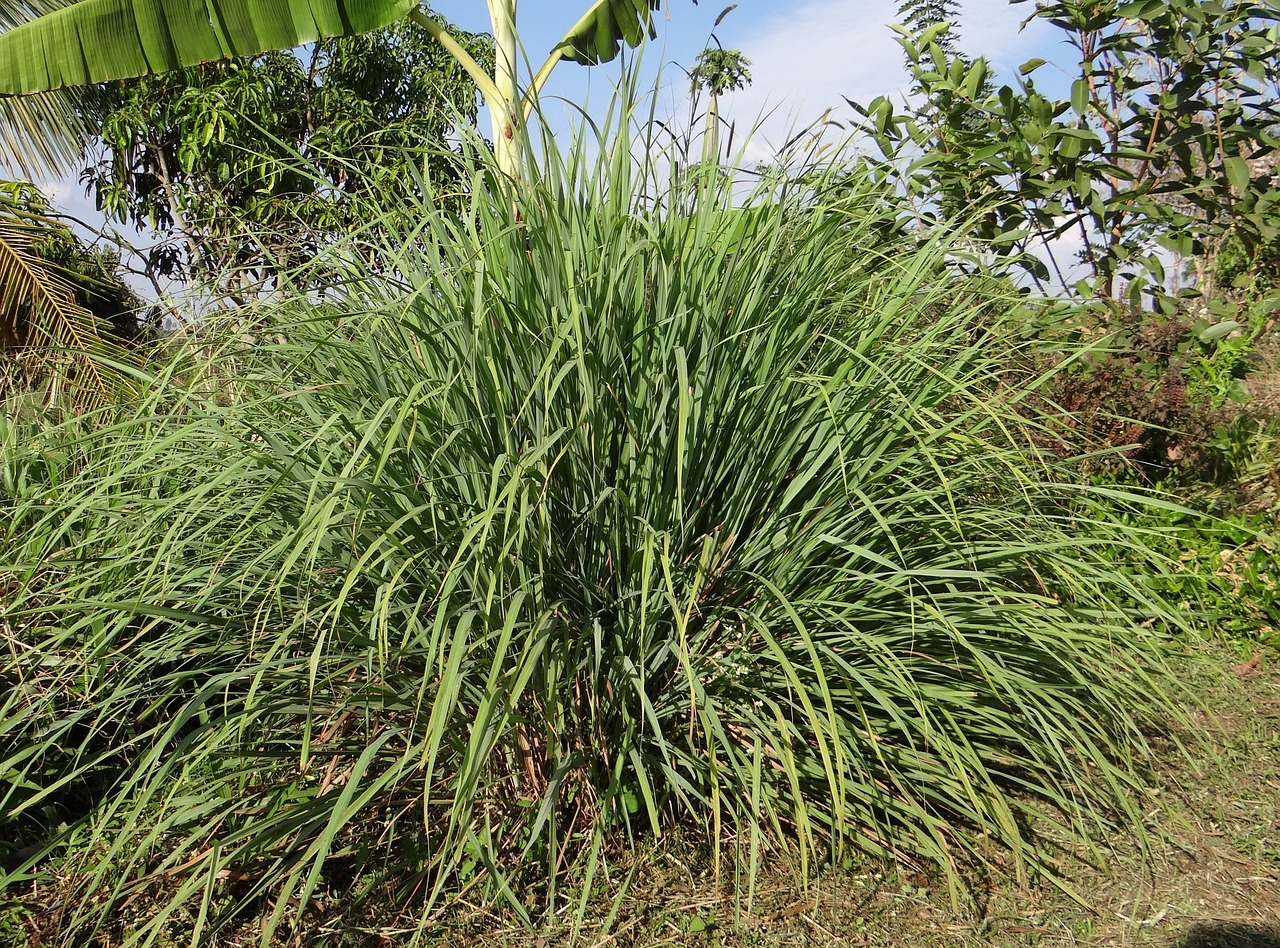 What It Looks Like:
Not to be confused with the citronella plant, which is a member of the geranium family, citronella grass is related to lemongrass. It is an ornamental grass that has no blooming cycle, which means it does not grow flowers. It grows in clumps and has very tall, light green blades. Citronella grass looks very much like lemongrass, however lemongrass blades are completely green whereas citronella grass blades have a purplish-pink or red-tinted stem base.
How It Works:
Citronella grass produces citronella oil, which is a well-known mosquito repellant. Mosquitoes hate the smell of citronella, but that is not the only thing that makes it so effective. The scent of citronella masks other scents that attract mosquitoes, like floral perfumes and the oils that humans secrete, confusing mosquitoes into thinking there are no meal sources nearby.
Gardening Tips:
Citronella grass is a perennial plant, however many gardeners in northern climates plant it annually. It thrives best when planted in loamy soil in a spot that receives filtered sunlight. It can dry out or wilt if it gets too much sun. This grass needs a good amount of water, so if you choose to plant it in a container be sure to water it daily.
What It Looks Like:
Not to be confused with the citronella plant, which is a member of the geranium family, citronella grass is related to lemongrass. It is an ornamental grass that has no blooming cycle, which means it does not grow flowers. It grows in clumps and has very tall, light green blades. Citronella grass looks very much like lemongrass, however lemongrass blades are completely green whereas citronella grass blades have a purplish-pink or red-tinted stem base.
How It Works:
Citronella grass produces citronella oil, which is a well-known mosquito repellant. Mosquitoes hate the smell of citronella, but that is not the only thing that makes it so effective. The scent of citronella masks other scents that attract mosquitoes, like floral perfumes and the oils that humans secrete, confusing mosquitoes into thinking there are no meal sources nearby.
Gardening Tips:
Citronella grass is a perennial plant, however many gardeners in northern climates plant it annually. It thrives best when planted in loamy soil in a spot that receives filtered sunlight. It can dry out or wilt if it gets too much sun. This grass needs a good amount of water, so if you choose to plant it in a container be sure to water it daily.
Lavender: An Aromatic Ally
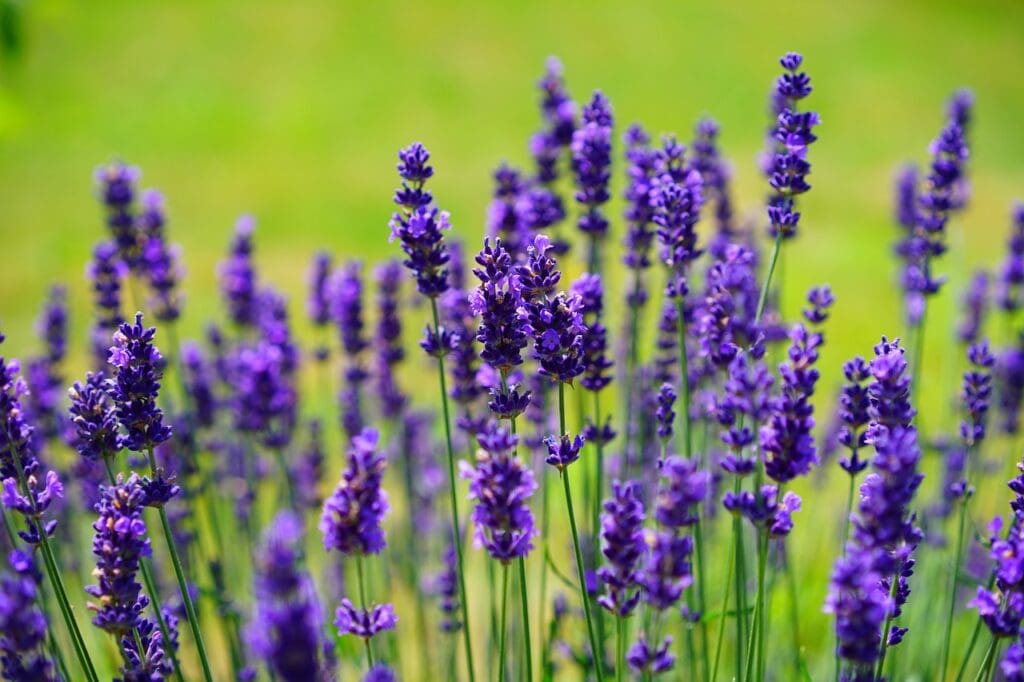 What It Looks Like:
Lavender grows in shrubs that are roughly 1 to 3 feet tall and wide. The plant has green stems with silvery-green leaves all the way up the stem. The delicate flowers sprouting from the top few inches of each stem are typically bluish-purple in color, but some varieties are white or pink.
How It Works:
Though popular among humans, the smell of lavender is detestable to mosquitoes. Lavender contains chemical compounds like linalool and camphor. These chemicals overload mosquitoes’ olfactory organs the same way DEET does, which is why lavender oil is considered one of the more effective natural mosquito repellants. In fact, researchers found that lavender oil is 93% effective against mosquitoes when used indoors, and roughly 53% effective when used outdoors.
Gardening Tips:
Lavender should be planted in low- or moderately-fertile soil that is neutral to slightly alkaline. This drought-resistant plant thrives in full sun and it requires sufficient drainage. It is considered a perennial plant, though it may need to be planted annually if it does not receive proper drainage. Lavender only needs to be watered once a week until the plants are established, then sparingly every two weeks. Planting the lavandin variety of lavender can be more effective against mosquitoes as it contains a higher concentration of camphor.
What It Looks Like:
Lavender grows in shrubs that are roughly 1 to 3 feet tall and wide. The plant has green stems with silvery-green leaves all the way up the stem. The delicate flowers sprouting from the top few inches of each stem are typically bluish-purple in color, but some varieties are white or pink.
How It Works:
Though popular among humans, the smell of lavender is detestable to mosquitoes. Lavender contains chemical compounds like linalool and camphor. These chemicals overload mosquitoes’ olfactory organs the same way DEET does, which is why lavender oil is considered one of the more effective natural mosquito repellants. In fact, researchers found that lavender oil is 93% effective against mosquitoes when used indoors, and roughly 53% effective when used outdoors.
Gardening Tips:
Lavender should be planted in low- or moderately-fertile soil that is neutral to slightly alkaline. This drought-resistant plant thrives in full sun and it requires sufficient drainage. It is considered a perennial plant, though it may need to be planted annually if it does not receive proper drainage. Lavender only needs to be watered once a week until the plants are established, then sparingly every two weeks. Planting the lavandin variety of lavender can be more effective against mosquitoes as it contains a higher concentration of camphor.
Marigolds: Vibrant Guardians Against Mosquitoes
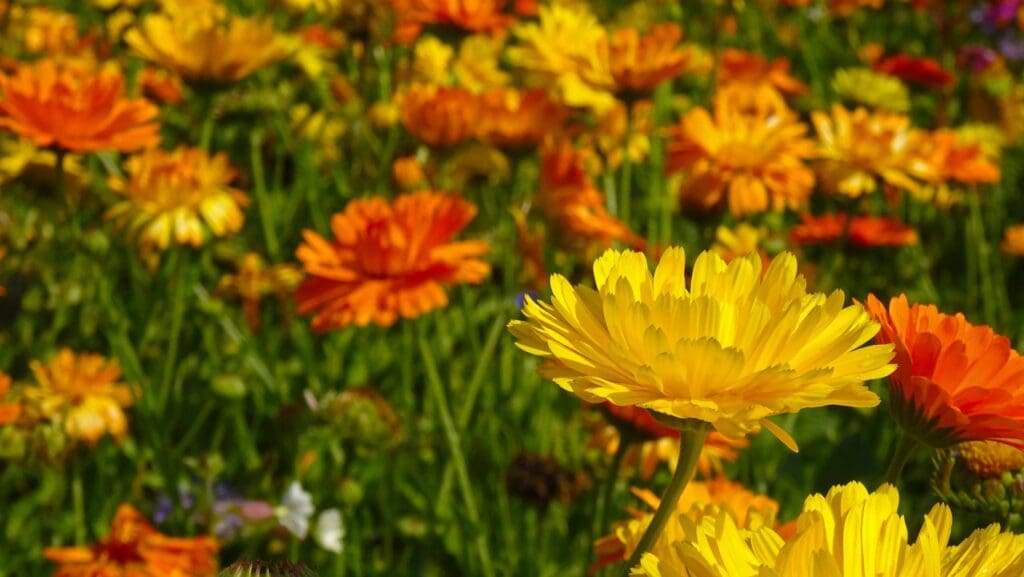 What It Looks Like:
There are many types of marigolds, all of which vary in appearance. Most, however, grow in shrubs with pom-pom- or daisy-like flowers that are yellow, orange, gold, red, or mahogany in color.
How It Works:
Marigolds contain a chemical called thiophenes as well as a chemical called pyrethrum, which is used in many insect repellants. Mosquitoes hate the smell of both of these chemicals, which are off-gassed by marigolds during their natural biological process.
Gardening Tips:
Marigolds are annual plants that thrive best in moderately fertile soil, though they are able to grow in almost any soil. They like direct sunlight and they require adequate drainage. Allow the soil to dry completely between waterings.
What It Looks Like:
There are many types of marigolds, all of which vary in appearance. Most, however, grow in shrubs with pom-pom- or daisy-like flowers that are yellow, orange, gold, red, or mahogany in color.
How It Works:
Marigolds contain a chemical called thiophenes as well as a chemical called pyrethrum, which is used in many insect repellants. Mosquitoes hate the smell of both of these chemicals, which are off-gassed by marigolds during their natural biological process.
Gardening Tips:
Marigolds are annual plants that thrive best in moderately fertile soil, though they are able to grow in almost any soil. They like direct sunlight and they require adequate drainage. Allow the soil to dry completely between waterings.
Rosemary: From Culinary Delight to Mosquito Defender
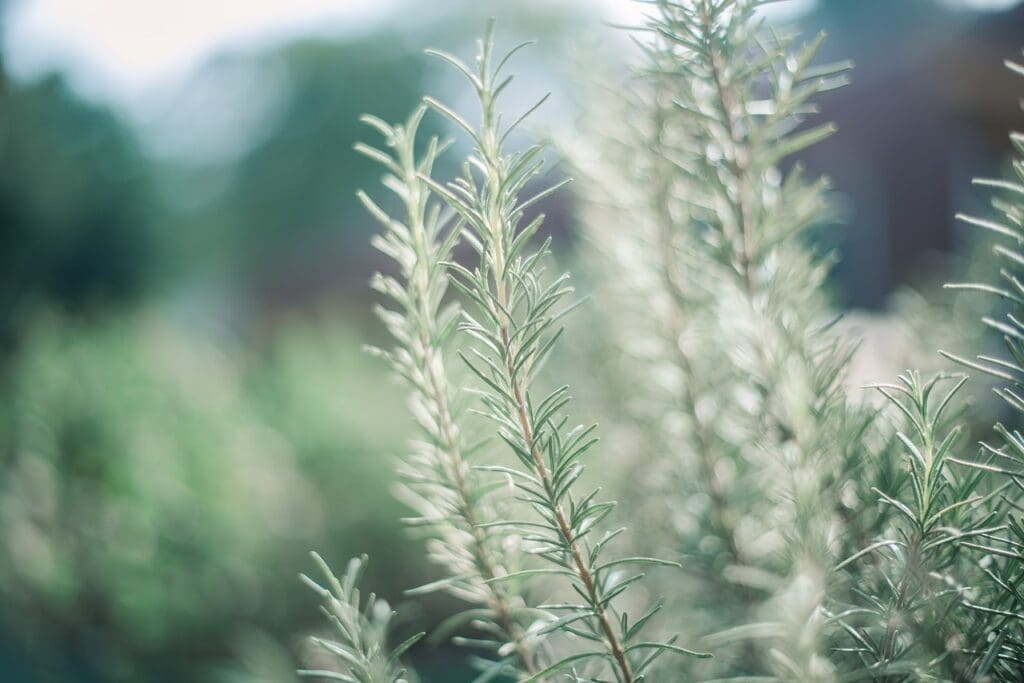 What It Looks Like:
Rosemary grows in small clusters that are grayish-green in color. It has small, thick, needle-like leaves that are powdery white and hairy on bottom and dark green on top. Rosemary sometimes grows small flowers that are blue, white, or pink.
How It Works:
Rosemary has a strong scent that masks other scents that mosquitoes find attractive. This is due to the oil it produces called eucalyptol, which is a natural bug repellant. A great way to get rosemary’s full mosquito-repelling effect is by burning it or throwing a few sprigs on the grill.
Gardening Tips:
Rosemary is a perennial evergreen herb that should be planted in soil that is not too acidic. It thrives in sunny but sheltered areas. Rosemary is drought-resistant and requires sufficient drainage. It should be watered every 1 ½ to 2 weeks if it is planted in the ground and once a week if it is in a container. Let the soil dry slightly between waterings.
What It Looks Like:
Rosemary grows in small clusters that are grayish-green in color. It has small, thick, needle-like leaves that are powdery white and hairy on bottom and dark green on top. Rosemary sometimes grows small flowers that are blue, white, or pink.
How It Works:
Rosemary has a strong scent that masks other scents that mosquitoes find attractive. This is due to the oil it produces called eucalyptol, which is a natural bug repellant. A great way to get rosemary’s full mosquito-repelling effect is by burning it or throwing a few sprigs on the grill.
Gardening Tips:
Rosemary is a perennial evergreen herb that should be planted in soil that is not too acidic. It thrives in sunny but sheltered areas. Rosemary is drought-resistant and requires sufficient drainage. It should be watered every 1 ½ to 2 weeks if it is planted in the ground and once a week if it is in a container. Let the soil dry slightly between waterings.
Basil: An Herbaceous Hero in Mosquito Repellency
 What It Looks Like:
Basil has square stems and shiny, bright green leaves that are oval in shape and cup slightly. Basil sometimes sprouts small clusters of flowers that are typically white or magenta in color.
How It Works:
Basil has a very potent scent and produces four mosquito-repelling compounds: estragole, nerolidol, limonene, and citronella. According to a study done in 2009, basil essential oil is toxic to mosquito larvae. Unlike some other plants on this list, basil can repel mosquitoes without its leaves being crushed.
Gardening Tips:
Basil is an annual plant that prefers damp, nutrient-rich soil. It should be planted in an area that receives 6 to 8 hours of sunlight and has good drainage. It should be watered every three days or so. Once basil begins sprouting flowers it ceases to grow new leaves, so it is important to snip off any buds that appear.
What It Looks Like:
Basil has square stems and shiny, bright green leaves that are oval in shape and cup slightly. Basil sometimes sprouts small clusters of flowers that are typically white or magenta in color.
How It Works:
Basil has a very potent scent and produces four mosquito-repelling compounds: estragole, nerolidol, limonene, and citronella. According to a study done in 2009, basil essential oil is toxic to mosquito larvae. Unlike some other plants on this list, basil can repel mosquitoes without its leaves being crushed.
Gardening Tips:
Basil is an annual plant that prefers damp, nutrient-rich soil. It should be planted in an area that receives 6 to 8 hours of sunlight and has good drainage. It should be watered every three days or so. Once basil begins sprouting flowers it ceases to grow new leaves, so it is important to snip off any buds that appear.
Peppermint: Cool, Fresh, and Mosquito-Free
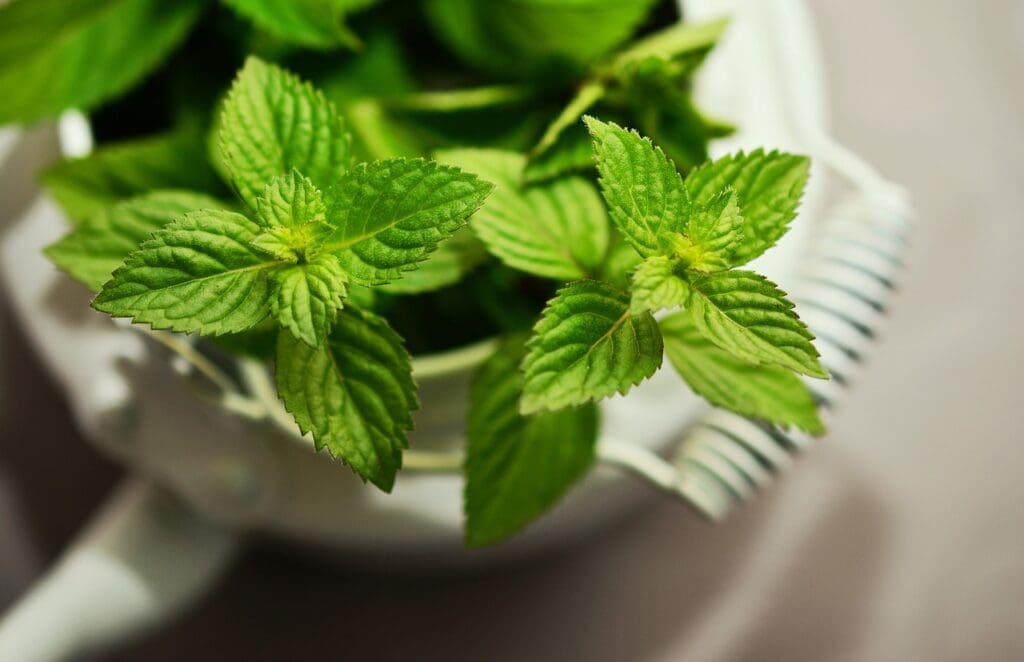 What It Looks Like:
Peppermint has square stems and dark green leaves. It sometimes grows oblong clusters of flowers that are pinkish or lavender in color.
How It Works:
Peppermint emits a potent scent due to the menthol it contains. The smell of the menthol masks other scents so mosquitoes cannot find humans or flowers to feed from.
Gardening Tips:
Peppermint is a perennial plant that thrives best in partial shade and damp soil. It should be watered every two to three days, and up to once a day during dry or hot periods. Peppermint is known to quickly spread and become invasive, so it is best to plant peppermint in a container rather than in a garden.
What It Looks Like:
Peppermint has square stems and dark green leaves. It sometimes grows oblong clusters of flowers that are pinkish or lavender in color.
How It Works:
Peppermint emits a potent scent due to the menthol it contains. The smell of the menthol masks other scents so mosquitoes cannot find humans or flowers to feed from.
Gardening Tips:
Peppermint is a perennial plant that thrives best in partial shade and damp soil. It should be watered every two to three days, and up to once a day during dry or hot periods. Peppermint is known to quickly spread and become invasive, so it is best to plant peppermint in a container rather than in a garden.
Geraniums: Nature's Colorful Shield Against Mosquitoes
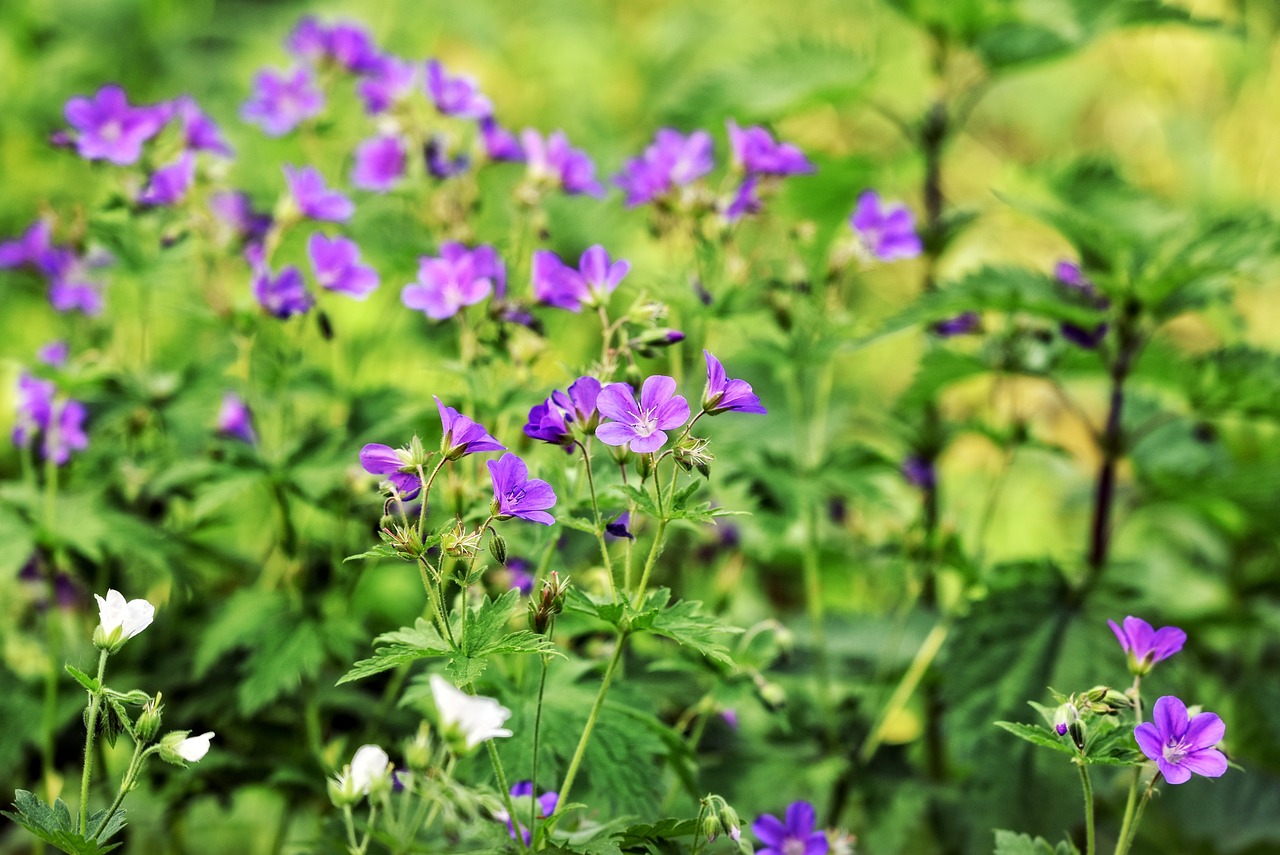 What It Looks Like:
Not all geraniums repel mosquitoes as well as certain types, specifically lemon geraniums and citronella geraniums. Geraniums grow in shrubs with crinkled, ruffly, lacy-looking leaves that are soft green in color and soft to the touch. Lemon geraniums, also called scented geraniums, have five-petaled flowers that are usually pink in color. Citronella geraniums are more lavender in color and the top two petals of each flower are decorated with burgundy veins.
How It Works:
Lemon and citronella geraniums both give off a strong citrus smell when their leaves are crushed. Citrus is one of the more powerful mosquito-repellent scents because it makes it difficult for mosquitoes to breathe, and it masks all of the scents that attract the pests.
Gardening Tips:
Geraniums are perennial flowers that should be planted in an area that receives full to partial sunlight. They need fertile, somewhat dry soil with adequate drainage. Geraniums should be watered roughly once a week. Let the top inch of soil dry out between waterings. Indoor geraniums generally need to be watered more frequently than those planted in the ground.
What It Looks Like:
Not all geraniums repel mosquitoes as well as certain types, specifically lemon geraniums and citronella geraniums. Geraniums grow in shrubs with crinkled, ruffly, lacy-looking leaves that are soft green in color and soft to the touch. Lemon geraniums, also called scented geraniums, have five-petaled flowers that are usually pink in color. Citronella geraniums are more lavender in color and the top two petals of each flower are decorated with burgundy veins.
How It Works:
Lemon and citronella geraniums both give off a strong citrus smell when their leaves are crushed. Citrus is one of the more powerful mosquito-repellent scents because it makes it difficult for mosquitoes to breathe, and it masks all of the scents that attract the pests.
Gardening Tips:
Geraniums are perennial flowers that should be planted in an area that receives full to partial sunlight. They need fertile, somewhat dry soil with adequate drainage. Geraniums should be watered roughly once a week. Let the top inch of soil dry out between waterings. Indoor geraniums generally need to be watered more frequently than those planted in the ground.
Lemon Balm: A Citrusy Secret to Mosquito-Free Spaces
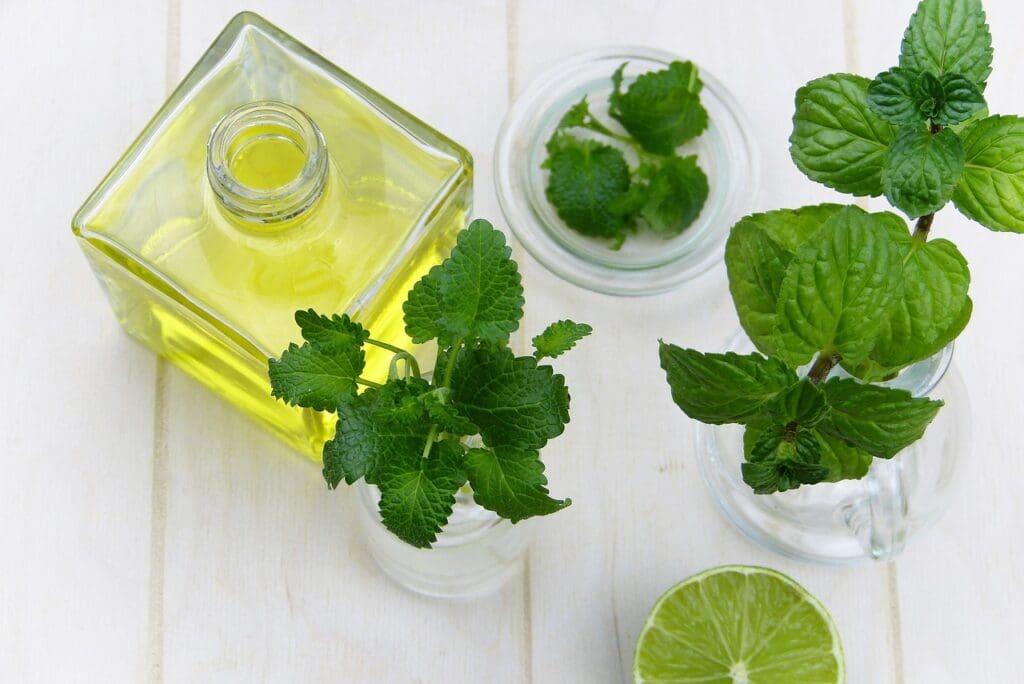 What It Looks Like:
Lemon balm is a member of the mint family and grows in bushes. It has square stems and its scalloped leaves are oval or heart-shaped. The leaves are bright green on top and whitish underneath. When it flowers, the buds are small and light purple or cream-colored.
How It Works:
As its name suggests, lemon balm emits a lemony scent which overwhelms a mosquito’s sense of smell. This is thanks to the compound it contains called citronellal.
Gardening Tips:
Lemon balm is a hardy perennial herb. It should be planted in slightly sandy soil that is damp but well-drained. It is an invasive species so it is best to plant lemon balm in a container. It needs 5 to 6 hours of sunlight each day. Let the soil dry somewhat between waterings.
What It Looks Like:
Lemon balm is a member of the mint family and grows in bushes. It has square stems and its scalloped leaves are oval or heart-shaped. The leaves are bright green on top and whitish underneath. When it flowers, the buds are small and light purple or cream-colored.
How It Works:
As its name suggests, lemon balm emits a lemony scent which overwhelms a mosquito’s sense of smell. This is thanks to the compound it contains called citronellal.
Gardening Tips:
Lemon balm is a hardy perennial herb. It should be planted in slightly sandy soil that is damp but well-drained. It is an invasive species so it is best to plant lemon balm in a container. It needs 5 to 6 hours of sunlight each day. Let the soil dry somewhat between waterings.
Catnip: A Feline Favorite, A Mosquito’s Worst Nightmare
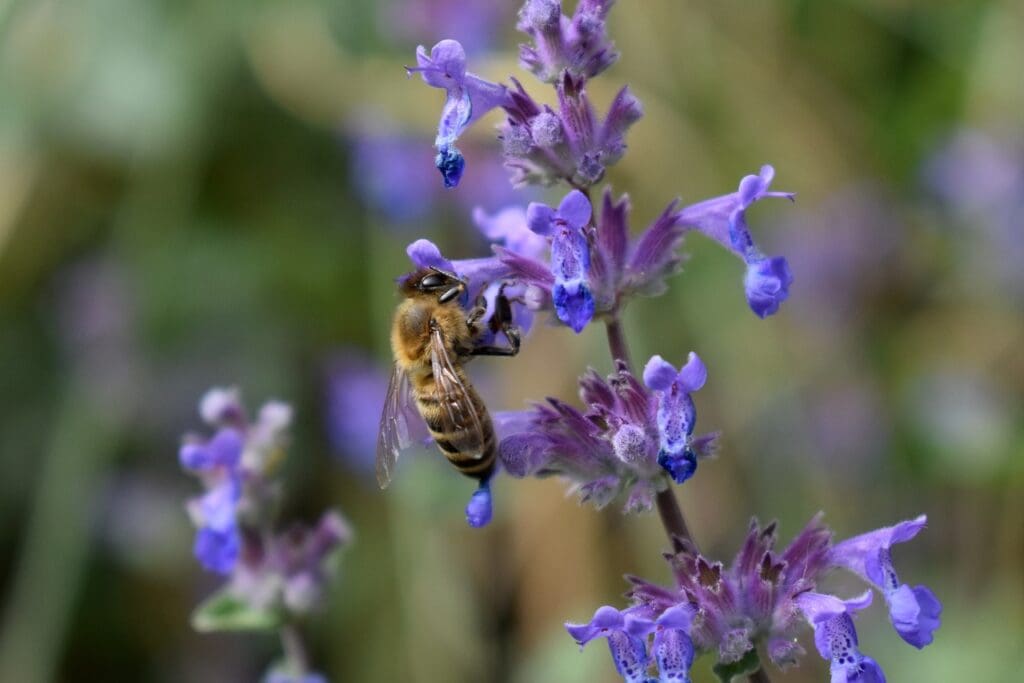 What It Looks Like:
Catnip grows in tall bushes. It has square stems and grayish-green leaves that are serrated and triangular. The flowers are arranged in a conical shape at the top of each stem and are white or very pale purple in color. Catmint, which is a close relative of catnip, has lavender flowers.
How It Works:
Both catnip and catmint produce a compound called nepetalactone which is an extremely powerful mosquito repellant. In fact, it has been found to be over ten times more effective than DEET. It works by triggering a chemical receptor in mosquitoes that causes them to feel itchiness or pain.
Gardening Tips:
Catnip is a perennial herb that should be planted in fertile soil that is damp but well-drained. It prefers full sun but can survive in partial shade. Water catnip every 4 to 7 days and keep the soil damp but not soggy. Catnip can invade flowerbeds so it is a good idea to plant it either away from other plants or in a container.
If your mosquito-repellant garden is not working to keep the biting pests away, you likely have an infestation. Check out our backyard service plans, or give Twin-Boro a call today and ask us how we can provide the extra defense needed to get rid of mosquitoes for good.
What It Looks Like:
Catnip grows in tall bushes. It has square stems and grayish-green leaves that are serrated and triangular. The flowers are arranged in a conical shape at the top of each stem and are white or very pale purple in color. Catmint, which is a close relative of catnip, has lavender flowers.
How It Works:
Both catnip and catmint produce a compound called nepetalactone which is an extremely powerful mosquito repellant. In fact, it has been found to be over ten times more effective than DEET. It works by triggering a chemical receptor in mosquitoes that causes them to feel itchiness or pain.
Gardening Tips:
Catnip is a perennial herb that should be planted in fertile soil that is damp but well-drained. It prefers full sun but can survive in partial shade. Water catnip every 4 to 7 days and keep the soil damp but not soggy. Catnip can invade flowerbeds so it is a good idea to plant it either away from other plants or in a container.
If your mosquito-repellant garden is not working to keep the biting pests away, you likely have an infestation. Check out our backyard service plans, or give Twin-Boro a call today and ask us how we can provide the extra defense needed to get rid of mosquitoes for good. 



